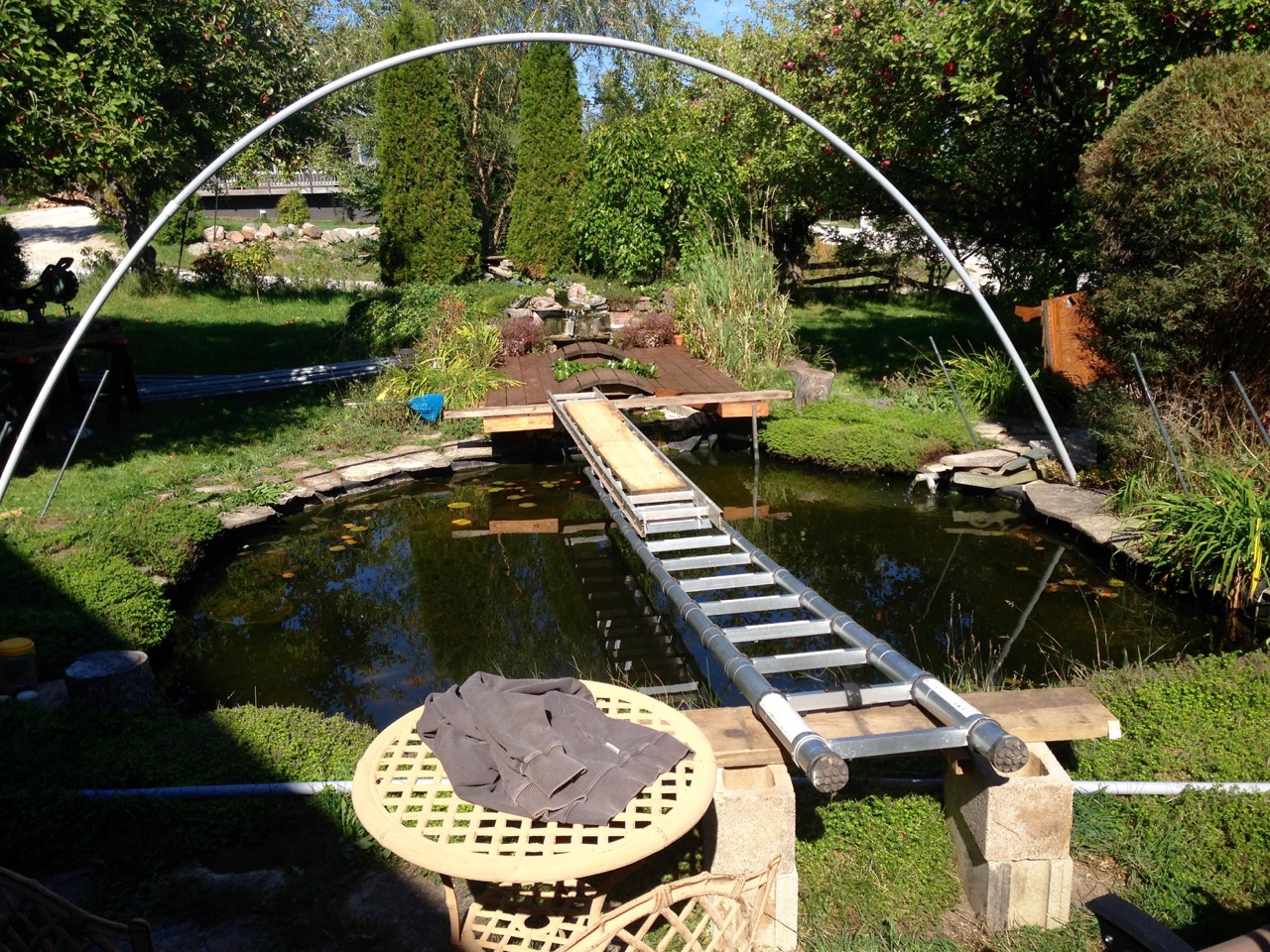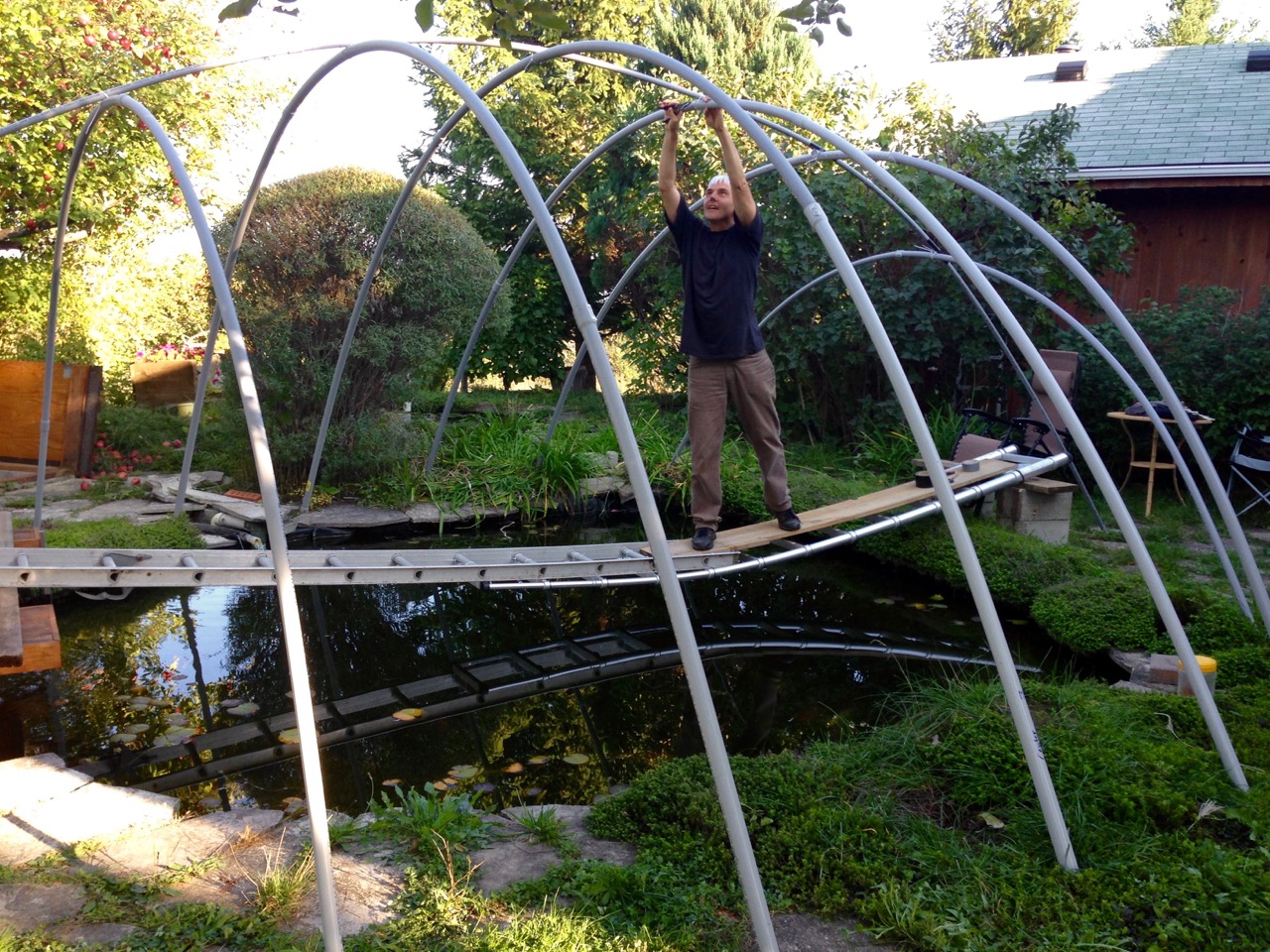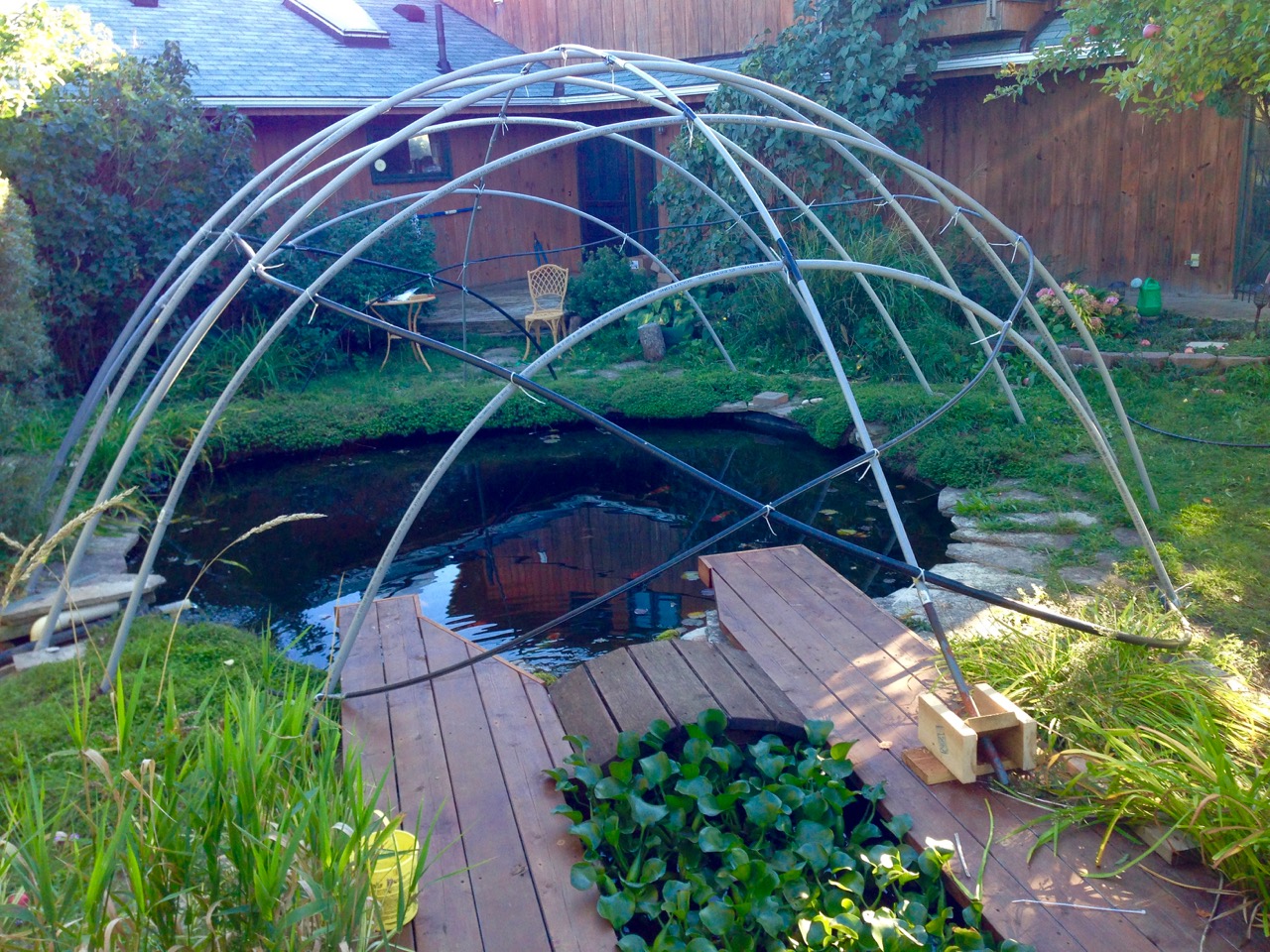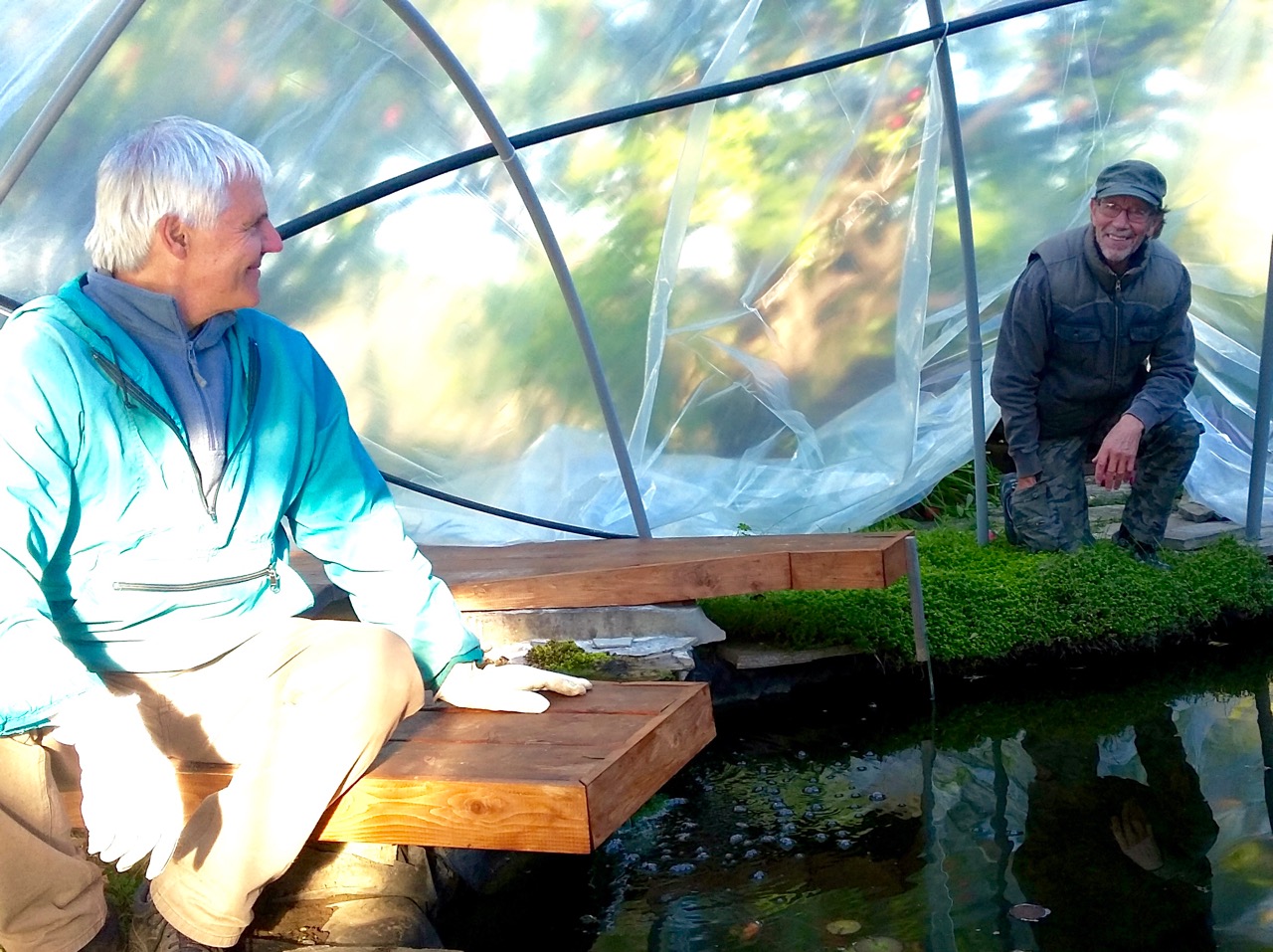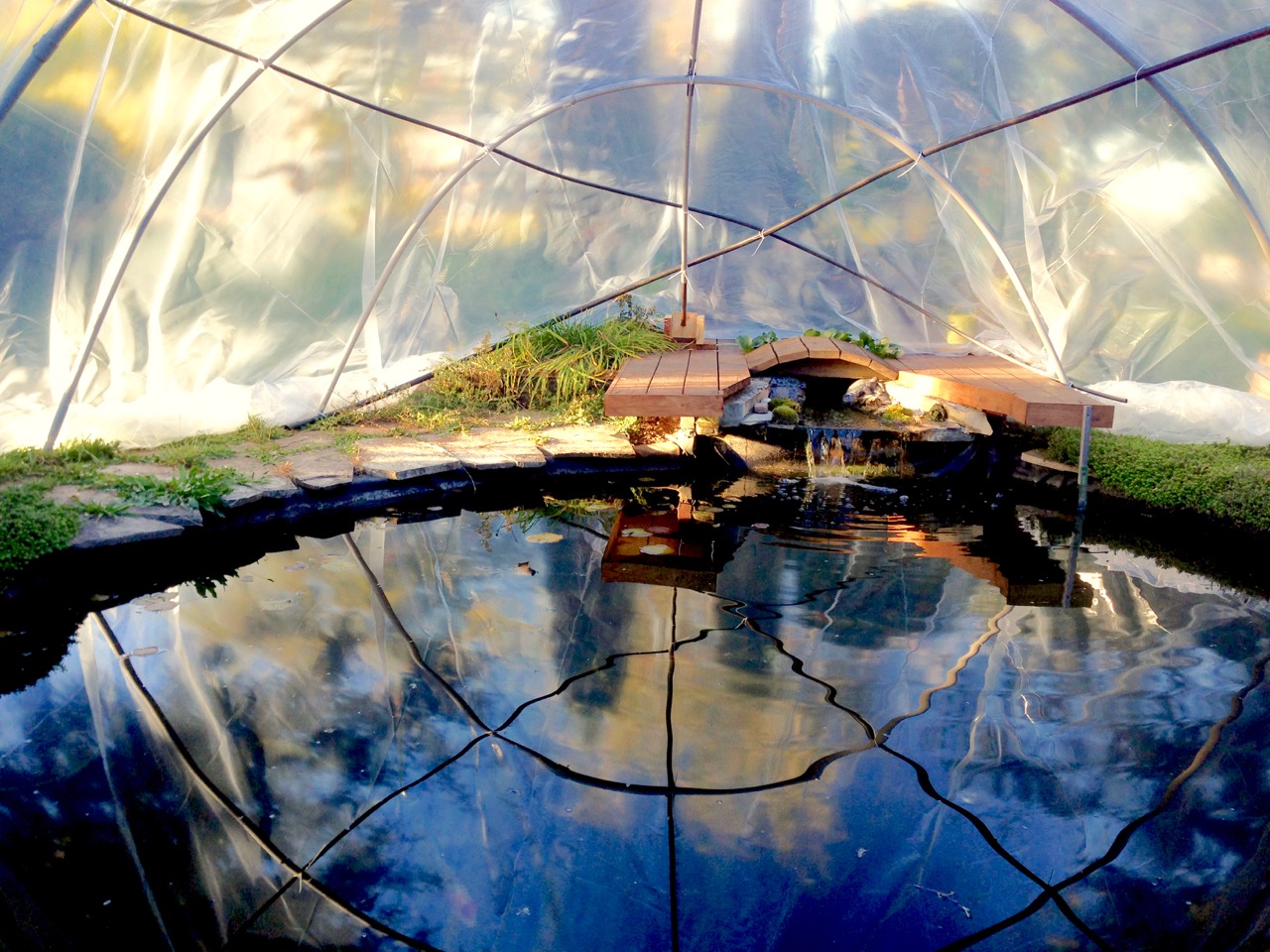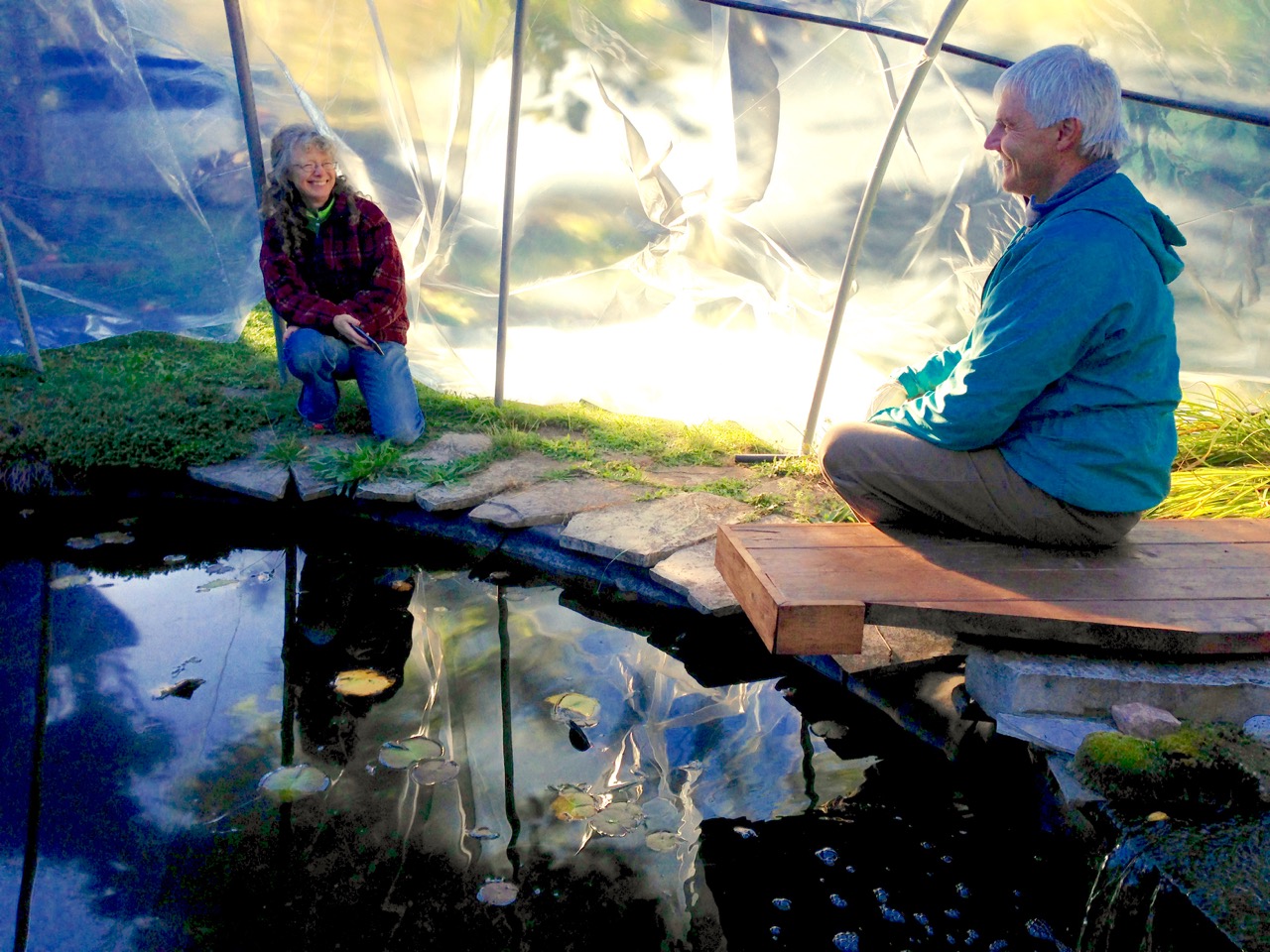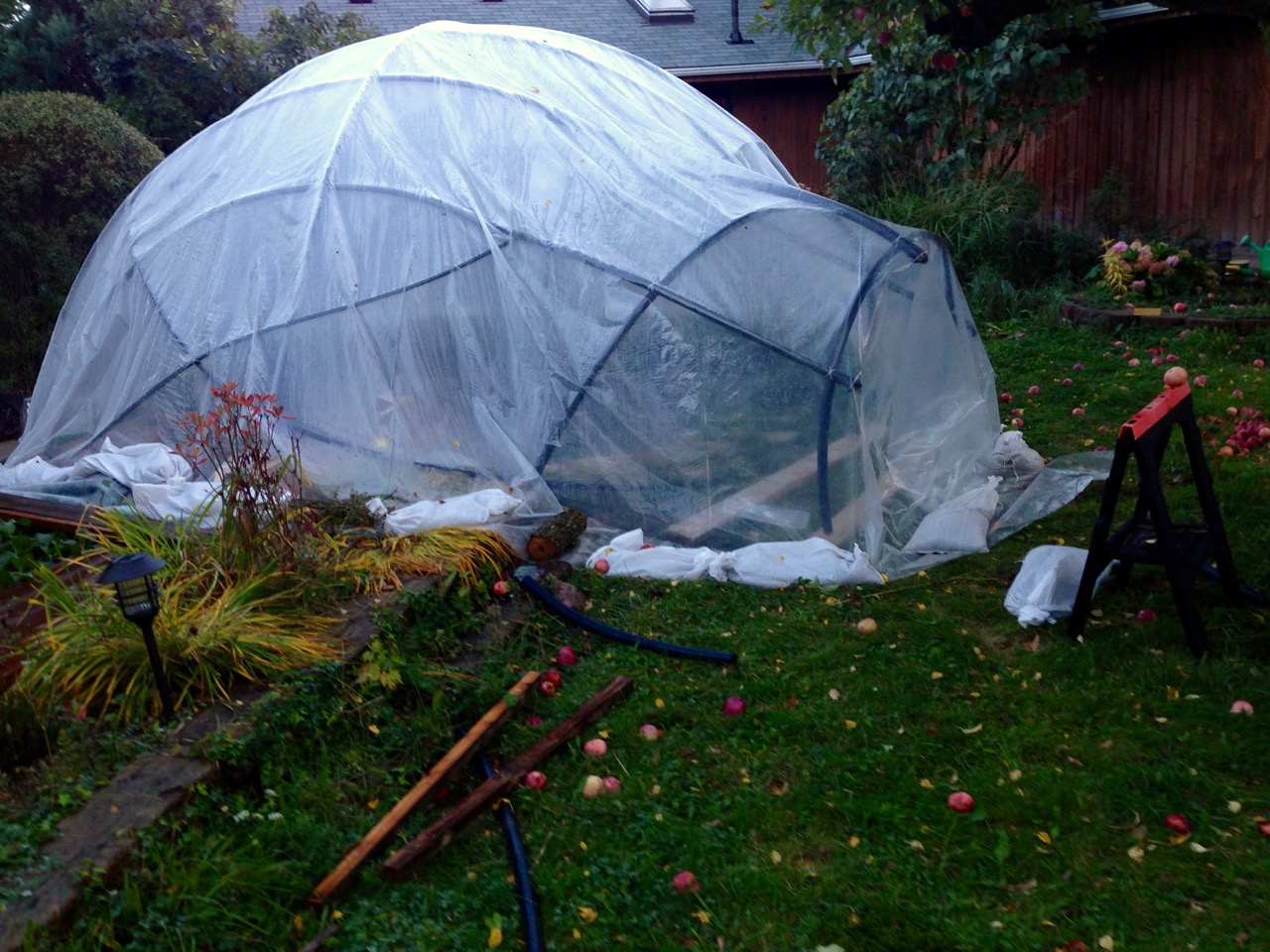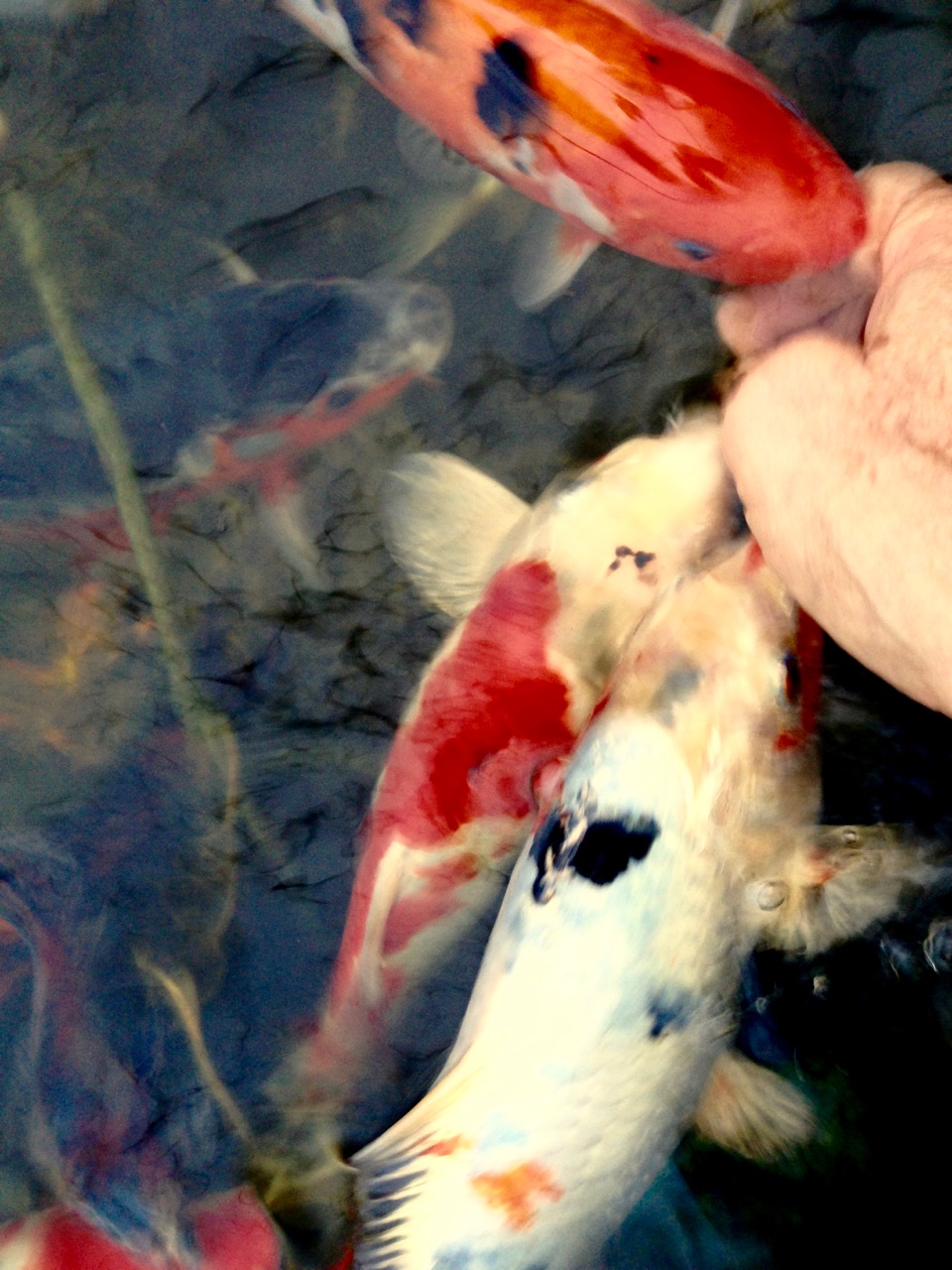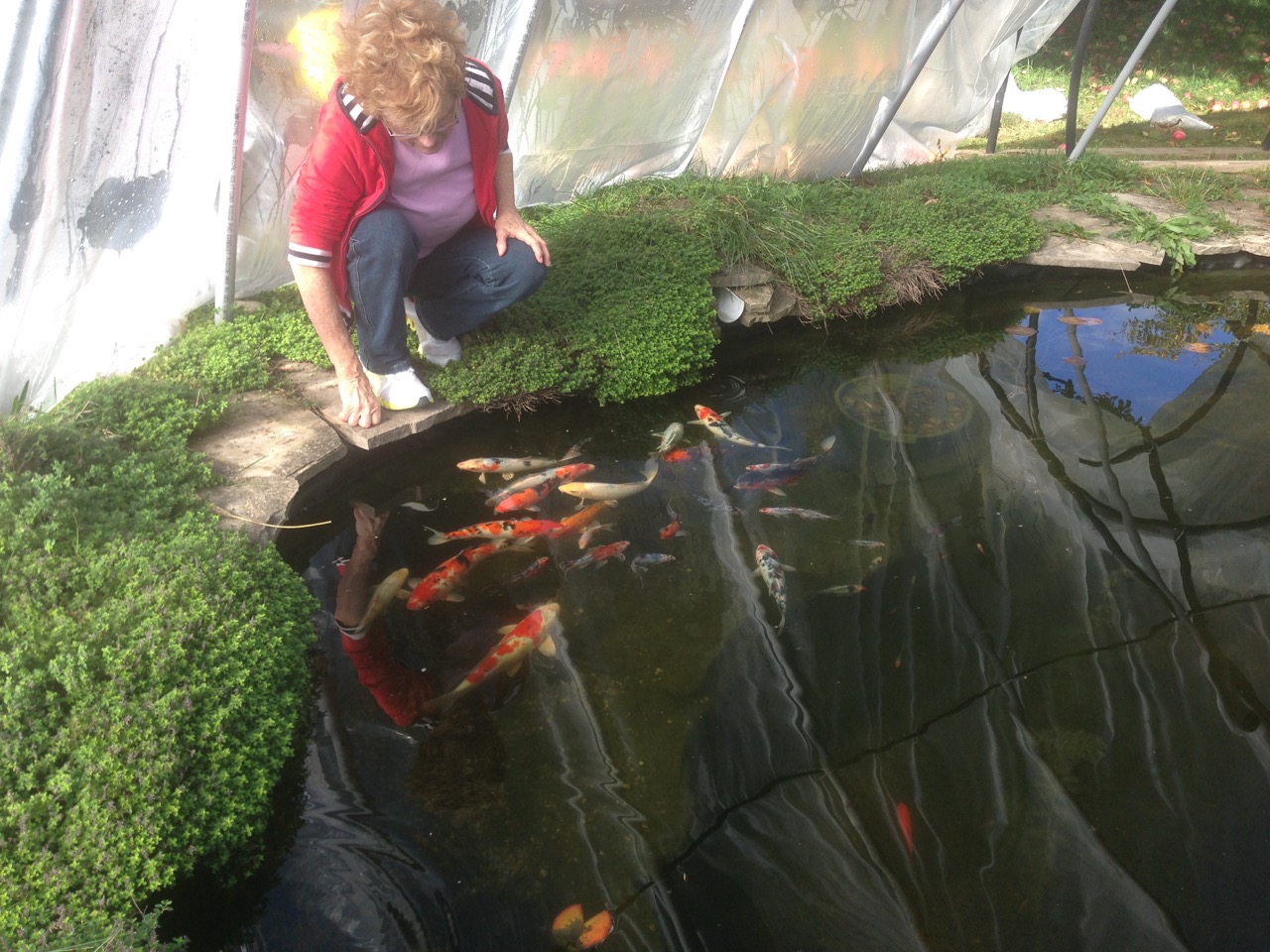
When my friend Klaus comes to visit every year from Bavaria, we
usually end up doing some kind of project together.
This September, 2016, it was building a cover for the pond,
something I have been fantasizing about for several years.
It always seems to me that the fish have a very long and difficult winter and sometimes I lose some. Perhaps with a cover, I could reduce the snow load and shorten the cold season enough to make a difference to their winter ordeal.
I had looked into buying a prefab cover but none of the sizes
would be a very good fit and the better ones were quite expensive.
And only the high end ones would come with UV resistant clear
plastic. Mostly they were quick assembly garages or shelters with
opaque covers that would keep the fish in darkness all winter.
Then I was thinking about building a custom frame out of wood.
Several challenges to that including how to cover the span of the
pond with good support yet not too much weight and heavy lumber.
Also how do you get out over the pond to work .. a project in
itself.
I eventually contacted Clarke’s Koi Ponds in Scarborough who I
have dealt with for years, and they had good suggestions and even
a web site showing how they build a hoop cover. They do this often
for their customers and in the end this seemed to be the best
approach. It uses 1 1/4” PVC electrical conduit which comes in 10’
lengths which join together with a press fit to give you any
length needed.
They even show how to reach the top of the structure over the
pond, by using a ladder horizontally. This is light yet strong and
a great idea.
Klaus and I agreed on this design after tossing around some other
options, so I purchased most of the parts before he arrived. The
special UV 6mil plastic is the only thing not easily available
(comes from a factory in Vineland, ON) but Clarke’s keep a supply
there where I got enough for the project.
The basic process is simple and surprisingly easy to execute.
Wherever you want a hoop, you hammer a 5’ length of 3/4” metal
tubing 2.5' into the ground.
Then the 1 1/4" electrical conduit pipe slips over this and you
can bend it to meet the matching tubing on the other side of the
pond.
In this pic you can see the first hoop in place and the metal
support pipes already hammered into the ground with a special
pounder we rented from Rice’s Hardware in Meaford. The hoops are
about 3’-4’ apart.
I only had one length of ladder so we borrowed another section
from neighbour Jesse at Bunny’s house. It sags much more than the
rigid section but it held our weight.
